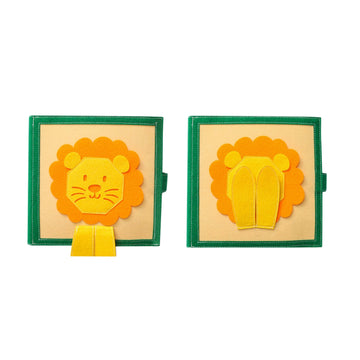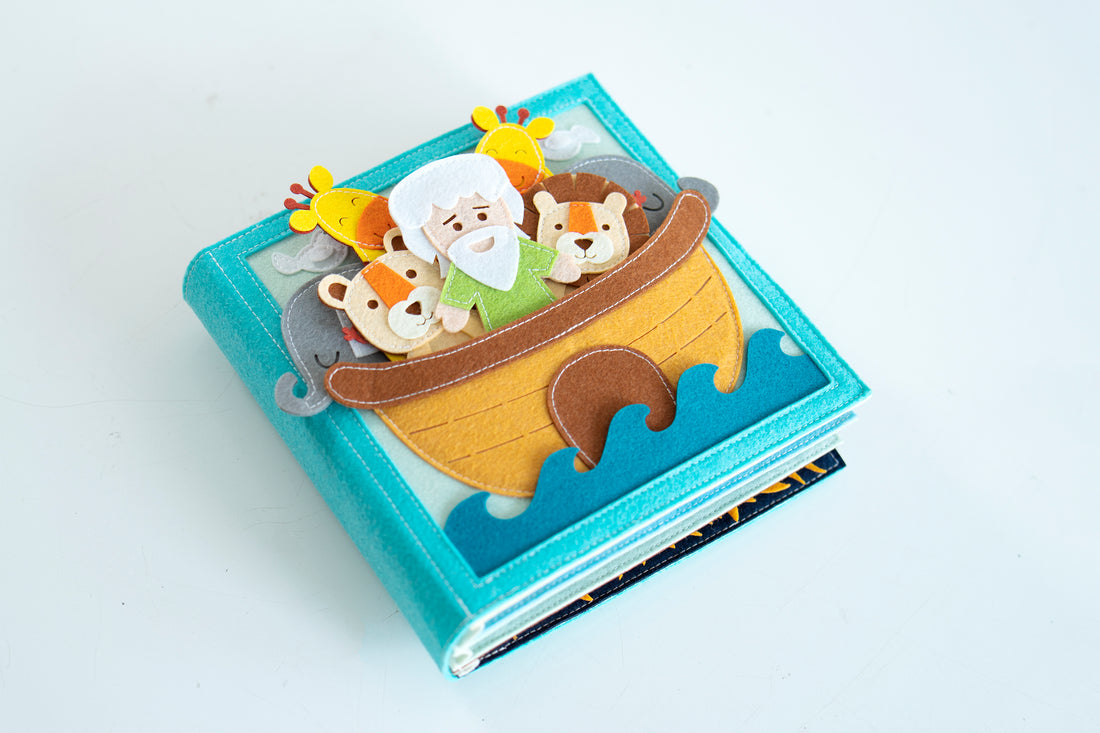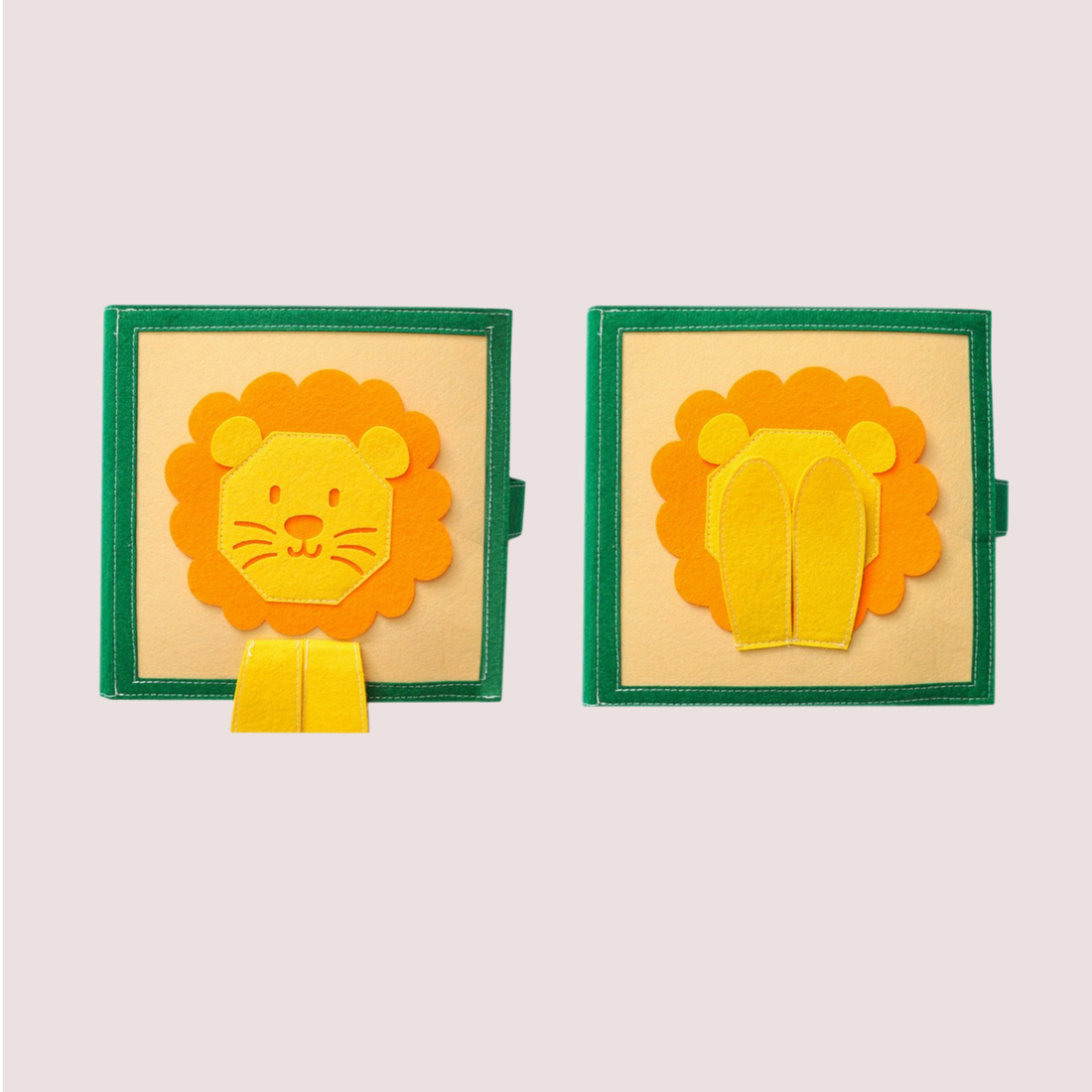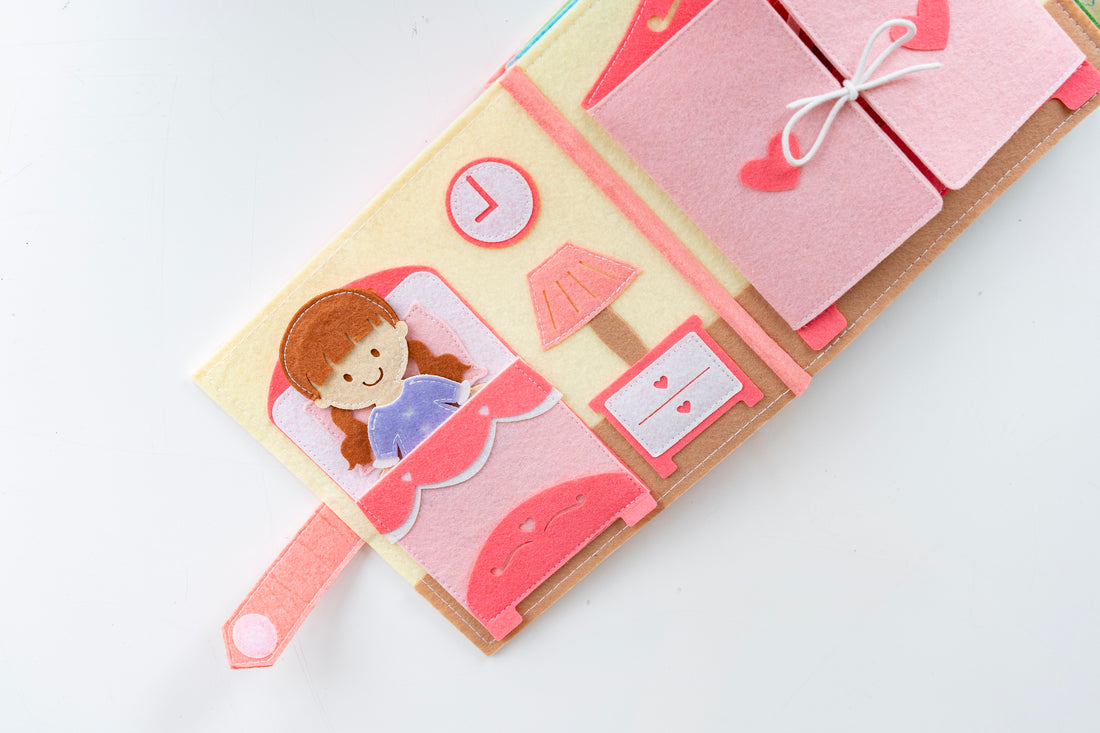DIY Busy Books for Toddlers: Crafting Fun and Learning Together
Have you ever considered embarking on a creative journey with your toddler that combines fun and education seamlessly? Imagine the joy on your child's face as you dive into the world of DIY Busy Books together, crafting personalized activities that spark curiosity and skill development. From sensory exploration to cognitive challenges, these handmade books offer endless possibilities for bonding and learning. So, why not take a step into this imaginative realm and discover the wonders of crafting fun and learning side by side with your little one?Benefits of DIY Busy Books

Discover the many advantages of creating your own DIY Busy Books for your toddler. By making these interactive books yourself, you have the freedom to customize activities that cater specifically to your child's interests and developmental needs. This personal touch ensures that the busy book will engage and entertain your little one effectively.
Crafting a DIY Busy Book isn't only a creative outlet but also a cost-effective way to provide your child with educational and stimulating materials. You can use materials you already have at home, making it a budget-friendly option compared to store-bought activity books.
Another benefit of DIY Busy Books is the opportunity for bonding and quality time with your toddler. As you work together on creating the book, you can strengthen your parent-child relationship and create lasting memories. Additionally, involving your child in the crafting process can enhance their fine motor skills and creativity.
Materials Needed for Crafting

To craft your DIY Busy Books, gather essential materials such as colorful felt, sturdy cardboard, scissors, and glue. Felt comes in various colors and textures, making it perfect for creating interactive pages that engage your toddler's senses. Sturdy cardboard provides a durable base for your book pages, ensuring they can withstand the wear and tear of little hands. Scissors are necessary for cutting out shapes, creating pockets, or trimming materials to fit your pages. Glue is essential for securing pieces together, whether you're attaching felt shapes, adding pockets, or creating interactive elements.
Additionally, you may want to have markers or fabric paint on hand to add details or personalize your busy book pages. Velcro dots or strips can be useful for creating movable parts that your child can interact with. Ribbons, buttons, and other embellishments can add sensory elements and tactile experiences to the pages. By gathering these materials, you'll have everything you need to start crafting your DIY Busy Books for toddlers.
Interactive Sensory Activities
As you engage in crafting your DIY Busy Books for toddlers, incorporating interactive sensory activities will enhance your child's learning and play experience. Sensory activities like textured pages with different fabrics or materials can provide tactile stimulation, helping your child explore new sensations and develop fine motor skills.
Including elements like crinkly paper or buttons that make noise when pressed can engage your child's auditory senses, making the book more interactive and exciting.
Integrating scented elements, such as scented felt shapes or scented markers, can introduce your child to various smells, stimulating their olfactory senses and creating a multi-sensory experience.
Visual sensory activities like using bright colors, contrasting patterns, or incorporating different shapes can enhance your child's visual perception and cognitive development.
Learning Through Play
Engage your child's curiosity and foster their development by incorporating valuable learning opportunities through play in your DIY Busy Books for toddlers. Play is a powerful tool for children to explore the world around them, develop crucial skills, and enhance their creativity. By designing interactive activities that encourage learning through play, you can make the educational experience enjoyable and engaging for your little one.
Integrating activities like matching shapes, counting objects, or identifying colors within your Busy Book can help enhance your child's cognitive abilities while having fun. For example, you can create a page with detachable Velcro numbers for your child to practice counting or a page with different textured fabrics to introduce sensory exploration.
Through play-based learning, children can improve their problem-solving skills, language development, and fine motor abilities. By creating a nurturing environment that combines play with education, you can set the foundation for your child's lifelong love of learning. So, get creative and design interactive activities that make learning a fun and exciting journey for your toddler.
Personalizing Your Busy Book

How can you make your Busy Book uniquely tailored to your child's interests and learning needs?
Start by incorporating themes and activities that resonate with your child. Consider their favorite colors, animals, or shapes when selecting materials and designing pages. Personalize the book by including photos of family members, pets, or familiar places to make it more engaging and meaningful for your child.
Another way to customize your Busy Book is by focusing on your child's developmental stage and skills. If your child is working on language development, include pages with simple words or letters to practice. For a child honing their fine motor skills, add activities that involve buttons, zippers, or Velcro to promote dexterity and coordination.
Additionally, consider your child's unique preferences and strengths. If your child loves music, include a page with buttons that play different sounds or songs. For a child who enjoys puzzles, incorporate interactive puzzles or matching games to stimulate their problem-solving skills.
Incorporating Fine Motor Skills
To enhance your child's fine motor skills through their Busy Book, include activities that involve threading beads, lacing cards, or manipulating small objects. These activities help develop hand-eye coordination, finger dexterity, and muscle strength in their hands and fingers.
Threading beads onto strings or pipe cleaners can improve their pincer grasp and concentration as they carefully slide each bead into place.
Lacing cards with different shapes and sizes can enhance their hand control and visual perception as they weave the lace through the holes.
Manipulating small objects like buttons, pom poms, or pegs can refine their finger movements and precision.
Educational Themes and Concepts
Exploring various educational themes and concepts within your DIY Busy Book can foster a rich learning experience for your toddler. By incorporating colors, shapes, numbers, letters, animals, and everyday objects into the pages of the busy book, you can introduce and reinforce these fundamental concepts in a fun and interactive way.
Color recognition pages can feature different colored fabrics or buttons for your toddler to match or sort, helping them learn to identify and differentiate colors. Shapes can be showcased through interactive puzzles or matching games, aiding in the development of spatial awareness and problem-solving skills. Including numbers and counting activities can enhance numerical literacy, while letter pages with alphabet flaps or textured letters can support early language acquisition.
Additionally, incorporating animal-themed pages can introduce your child to various creatures, their names, and sounds, fostering curiosity and vocabulary expansion. Everyday object pages can depict common items like fruits, vehicles, or clothing, promoting real-world knowledge and vocabulary building. By integrating these educational themes and concepts into your DIY Busy Book, you create a dynamic learning tool that engages your toddler's senses and cognitive abilities.
Creating Interactive Pages

Incorporate pull tabs, flaps, and textured elements to create engaging interactive pages in your DIY Busy Book for toddlers. Pull tabs can reveal hidden pictures or move characters around the page, adding an element of surprise and delight for your little one.
Flaps can hide objects or information that can be discovered by lifting them, promoting curiosity and exploration. Textured elements like felt, sandpaper, or fabric can provide tactile stimulation, enhancing sensory experiences while also adding a touch of fun to the pages.
Consider creating a page with a pull tab that moves a car along a road, a flap that uncovers different animal sounds, or a textured tree where leaves can be 'picked' and placed back on. These interactive elements not only entertain but also promote fine motor skills, hand-eye coordination, and cognitive development in a playful way.
Remember to ensure that all moving parts are securely attached to prevent choking hazards and make the book durable enough to withstand toddler playtime.
Enhancing Cognitive Development
Engage your toddler's cognitive development by introducing interactive puzzles and matching games in their DIY Busy Book. These activities can help enhance problem-solving skills, memory retention, and critical thinking abilities.
Consider creating pages with simple shape puzzles where your child can match a shape to its corresponding cutout, or design pages with color-matching games using buttons or felt pieces.
Another way to boost cognitive development is by incorporating counting activities. Craft pages with detachable numbers or buttons for your child to practice counting and number recognition. You can also create pages with simple math problems like addition or subtraction using Velcro numbers that can be moved around to solve the equations.
Furthermore, include pages that encourage memory and concentration. Develop matching games with pictures or shapes that your toddler can pair up, promoting visual recognition and memory skills. These activities not only make learning enjoyable but also stimulate your child's cognitive abilities in a fun and engaging manner.
Tips for Crafting Success

For successful crafting of your DIY Busy Book, prioritize organization and planning to streamline the process efficiently. Begin by gathering all the materials you'll need before starting. This includes colorful felt, fabric markers, scissors, and any other embellishments you plan to use. Creating a checklist can help you keep track of what you have and what you still need to buy.
When designing the pages of your busy book, sketch out a rough layout first to visualize how everything will fit together. This will prevent errors and make the assembly process smoother. Remember to involve your toddler in the planning stage to ensure the activities cater to their interests and developmental needs.
As you start crafting, set up a designated workspace with good lighting and a comfortable chair. Make sure to take breaks to prevent eye strain and hand fatigue. Keep a trash bin nearby to discard any scraps or mistakes promptly. By following these tips and staying organized, you'll have a successful and enjoyable experience creating a personalized busy book for your little one.
Frequently Asked Questions
Can I Use Pre-Made Templates for the Busy Book Pages?
Yes, you can use pre-made templates for the busy book pages. They provide a convenient starting point and can help streamline the crafting process. Simply print them out and customize them to suit your toddler's interests.How Can I Ensure the Activities Are Age-Appropriate?
To ensure the activities are age-appropriate, consider your toddler's developmental stage and interests. Use simple tasks that match their abilities. Incorporate colors, shapes, and textures to engage their senses. Focus on activities that promote learning through play.
What Are Some Storage Solutions for Busy Books?
To store busy books effectively, consider using bins, baskets, or shelves to keep them organized and easily accessible. Utilize clear labels for quick identification and rotation. Keep the storage area tidy to encourage continued use.Are There Any Safety Considerations to Keep in Mind?
When crafting busy books for toddlers, always prioritize safety. Avoid small parts that could be choking hazards, ensure pages are securely attached, and use non-toxic materials. Regularly inspect the book for wear and tear.
How Can I Involve My Child in the Crafting Process?
Involve your child in the crafting process by letting them choose colors, shapes, and materials. Encourage creativity, offer guidance when needed, and celebrate their accomplishments. Crafting together creates bonding moments and fosters a love for creativity.
In conclusion, DIY busy books for toddlers offer a fantastic way to bond with your child while promoting fun and learning.
By customizing the book to suit your child's interests and needs, you can enhance their fine motor skills, creativity, and cognitive development.
Crafting interactive sensory activities and personalized themes create a tailored learning experience that fosters exploration and skill development.
Get creative, have fun, and watch your child thrive through play!





























